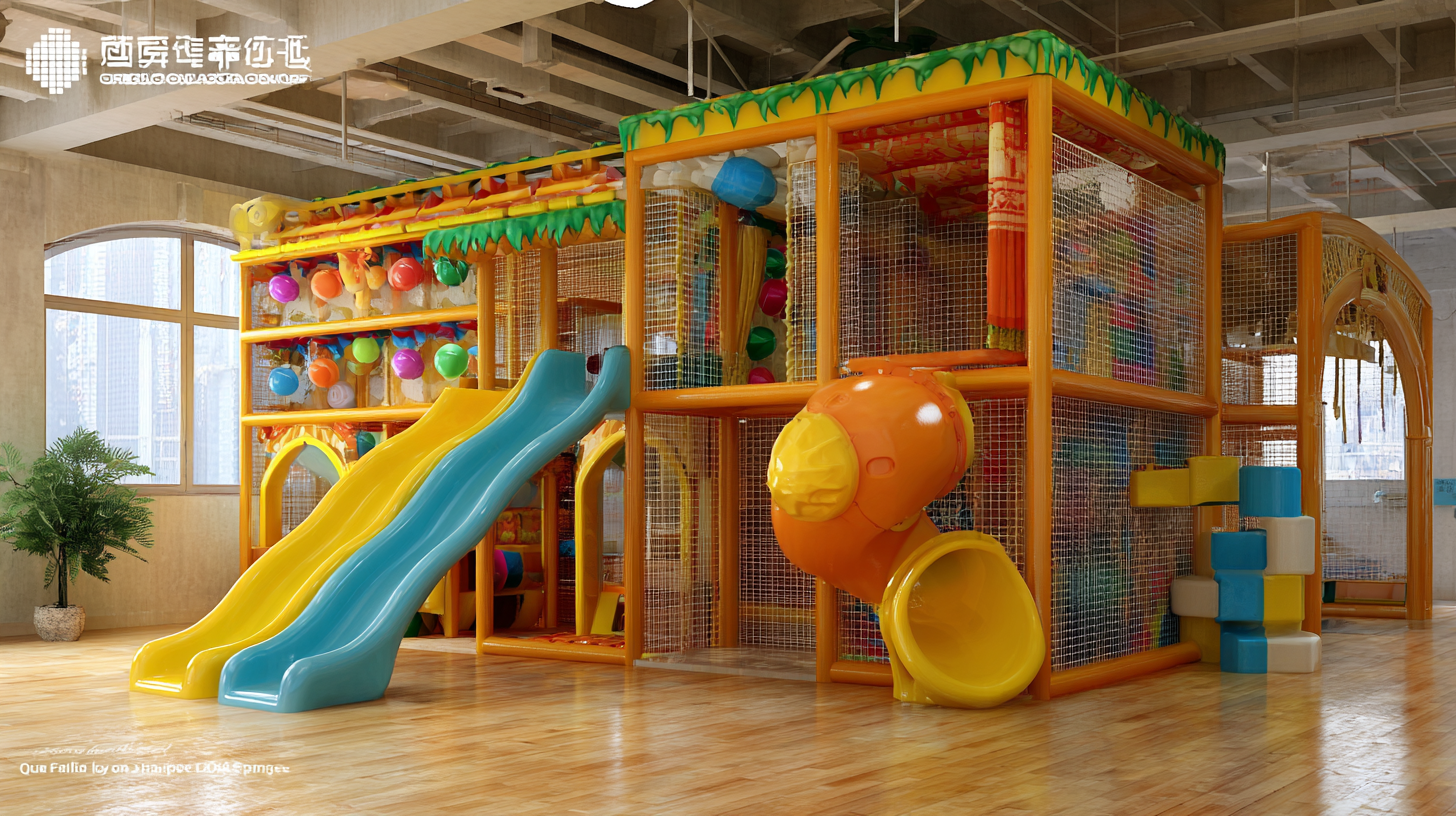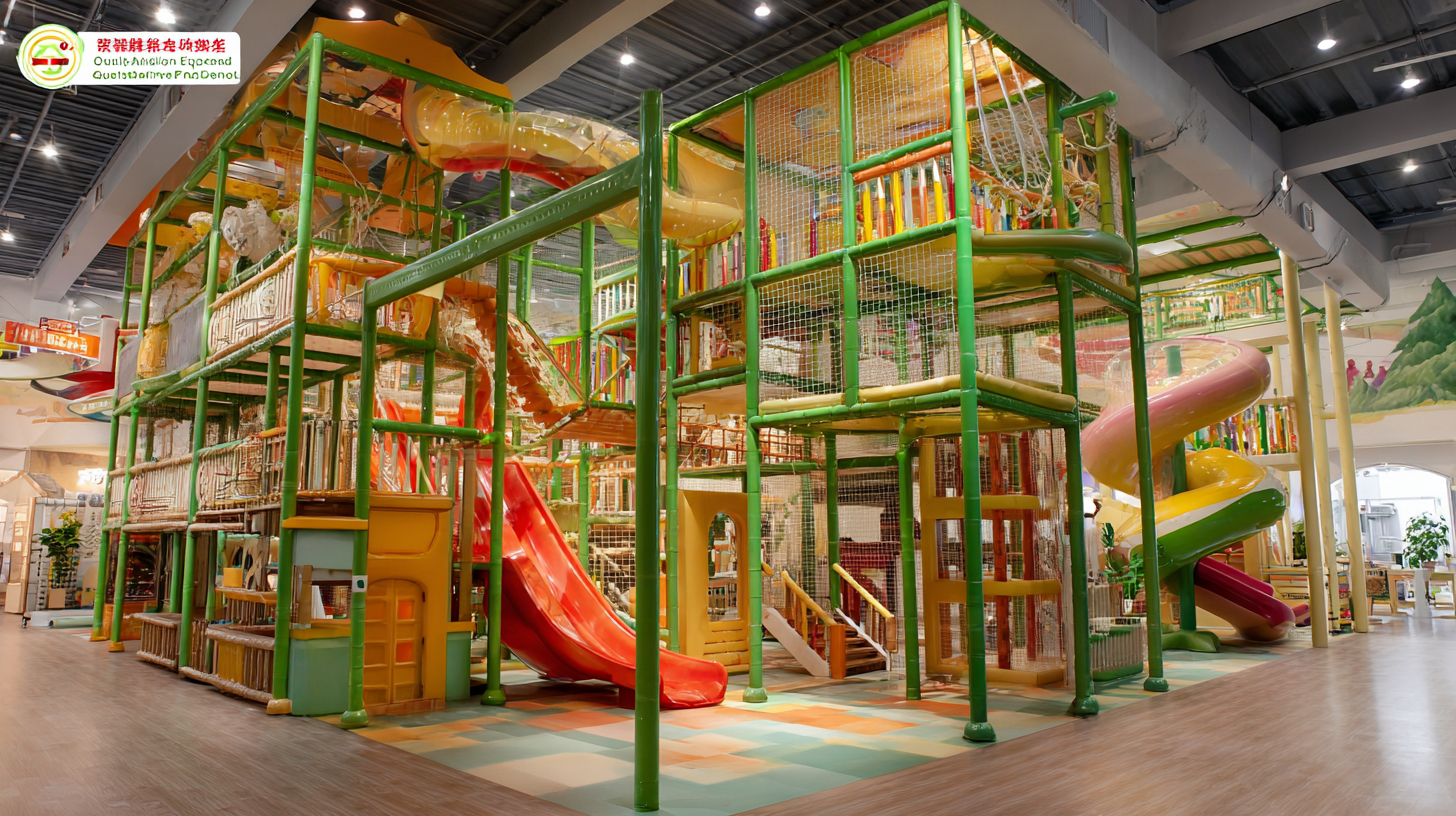
The global indoor play equipment market has witnessed substantial growth, driven by the increasing demand for safe and engaging recreational spaces for children. According to a report by Grand View Research, the indoor playground equipment market is expected to reach USD 3.1 billion by 2025, demonstrating a compound annual growth rate (CAGR) of 5.7%. This growth is reflective of a broader recognition of the importance of physical activity in children’s development, as well as an emphasis on creating stimulating environments that foster social interaction and creativity. As parents and educators alike prioritize quality and safety, the need for high-standard indoor play equipment has surged, particularly from manufacturers in China known for their innovative designs and competitive pricing. This blog will delve into the various types of indoor play equipment available in the market, highlighting how these products not only meet safety regulations but also encourage active play and learning in a fun and engaging manner.

The importance of high-quality indoor play equipment cannot be overstated when it comes to child development. Indoor play spaces offer children a safe environment to explore, learn, and engage with peers. Well-crafted equipment made in China not only ensures safety but also promotes physical activity, which is crucial for developing motor skills, coordination, and overall fitness. When children are encouraged to move, climb, and play, they build important physical capabilities that will benefit them throughout their lives.
Tip: When choosing indoor play equipment, ensure it complies with safety standards and is made from non-toxic materials. This will provide peace of mind while allowing children to play freely and creatively.
Additionally, high-quality indoor play equipment can significantly enhance social development. Through interactive play, children learn vital skills such as teamwork, communication, and conflict resolution. Engaging with others fosters empathy and understanding, helping children to form strong relationships. As they navigate through different play scenarios, they develop critical thinking and problem-solving abilities, preparing them for future challenges.
Tip: Prioritize open-ended play equipment that encourages imagination and creativity, allowing children to invent their own games and stories. This not only enhances cognitive skills but also keeps playtime fresh and exciting.
When it comes to indoor play equipment, quality is paramount. A recent report by the International Association of Amusement Parks and Attractions (IAAPA) highlights that the global indoor play industry is projected to reach $16 billion by 2025, driven by a surge in demand for safe, engaging, and durable play spaces. This underscores the importance of investing in high-quality play equipment that can withstand vigorous use while ensuring the safety and enjoyment of children.
 Indoor play equipment crafted in China is particularly notable for its innovative designs and high safety standards. For instance, many manufacturers follow strict compliance with ASTM and EN safety regulations. According to a market analysis by IBISWorld, 75% of indoor play equipment is made from environmentally friendly materials, which not only cater to parents' increasing demand for sustainability but also enhance the longevity of the products. Furthermore, customizable options available in this sector allow for tailored solutions that fit different space requirements, making it easier for businesses to create unique, engaging environments for children.
Indoor play equipment crafted in China is particularly notable for its innovative designs and high safety standards. For instance, many manufacturers follow strict compliance with ASTM and EN safety regulations. According to a market analysis by IBISWorld, 75% of indoor play equipment is made from environmentally friendly materials, which not only cater to parents' increasing demand for sustainability but also enhance the longevity of the products. Furthermore, customizable options available in this sector allow for tailored solutions that fit different space requirements, making it easier for businesses to create unique, engaging environments for children.
In a rapidly growing market, the integration of advanced technology further sets the best indoor play equipment apart. Features like interactive play panels and augmented reality elements are becoming more common, offering children not just physical challenges but also cognitive stimulation. Data from Statista shows that the use of technology in indoor play equipment is expected to grow by 20% over the next few years, indicating a transformative shift towards more engaging and educational play experiences.
Indoor play equipment is essential for children's physical and social development, but safety must always come first. According to the World Health Organization, accidents related to play equipment are a leading cause of injury among children, emphasizing the need for rigorous safety standards. In recent years, the global market for indoor play equipment has seen an increased focus on compliance with safety regulations. In particular, the standards set forth by organizations such as ASTM International ensure that materials used are non-toxic and structures are designed to minimize hazards.
To ensure a safe play environment, manufacturers must adhere to specific guidelines, including the use of soft materials, rounded edges, and adequate spacing between equipment to prevent injuries. According to a report by MarketsandMarkets, the global indoor playground market is expected to grow by over 10% annually. This growth reflects the rising demand for safe, high-quality play equipment that parents and educators can trust.
Tips: When selecting indoor play equipment, look for products that have been tested and certified by recognized safety standards. Regular inspections and maintenance of the equipment will also help prevent accidents and extend the lifespan of the play area. Additionally, consider the age and skill level of your users to choose appropriate equipment that matches their capabilities.
Indoor air quality often takes a backseat in discussions about environmental impact, yet it is essential to recognize that pollution can occur indoors just as much as outdoors. In the context of indoor play equipment manufacturing, this is particularly pertinent. High-quality indoor play products must not only be safe and engaging for children but also contribute positively to the indoor environment. Manufacturers in China are becoming increasingly aware of their ecological footprint, moving towards the use of eco-friendly materials that minimize harmful emissions and enhance indoor air quality.
Tips for selecting indoor play equipment should focus on sustainability. Look for certifications that indicate a product is made from non-toxic, environmentally safe materials. Additionally, consider equipment that is designed for longevity, which can significantly reduce waste. Lastly, support brands that are transparent about their manufacturing processes and actively work to reduce their environmental impact.
As the toy industry evolves, manufacturers are addressing pressing issues like plastic pollution while adhering to stringent environmental regulations. By selecting high-quality indoor play equipment that prioritizes sustainability, parents can foster a healthier environment for their children, promoting not only play but a broader awareness of our ecological responsibilities. It's a step towards a better future for both kids and the planet.

When considering indoor play equipment, sourcing from China offers distinctive competitive advantages. According to a recent report by IBISWorld, the global indoor playground equipment industry is projected to reach $1.2 billion by 2025, with China holding a significant share due to its advanced manufacturing capabilities and cost efficiency. The country's well-established supply chain facilitates not only lower production costs but also faster turnaround times, allowing businesses to meet consumer demand promptly.
Tip: When selecting indoor play equipment, ensure to verify supplier certifications and safety standards to guarantee product quality and compliance with international safety regulations.
Moreover, China's focus on innovation has led to the introduction of new materials and designs that enhance play experiences. In 2022, the China National Hardware Association reported a 15% increase in demand for environmentally friendly and safe play equipment. As parents and operators prioritize safety and sustainability, manufacturers in China are adapting to meet these evolving expectations, further solidifying their position in the global market.
Tip: Look for suppliers that emphasize sustainable practices and use eco-friendly materials, as this not only benefits the environment but also appeals to today’s conscientious consumers.
